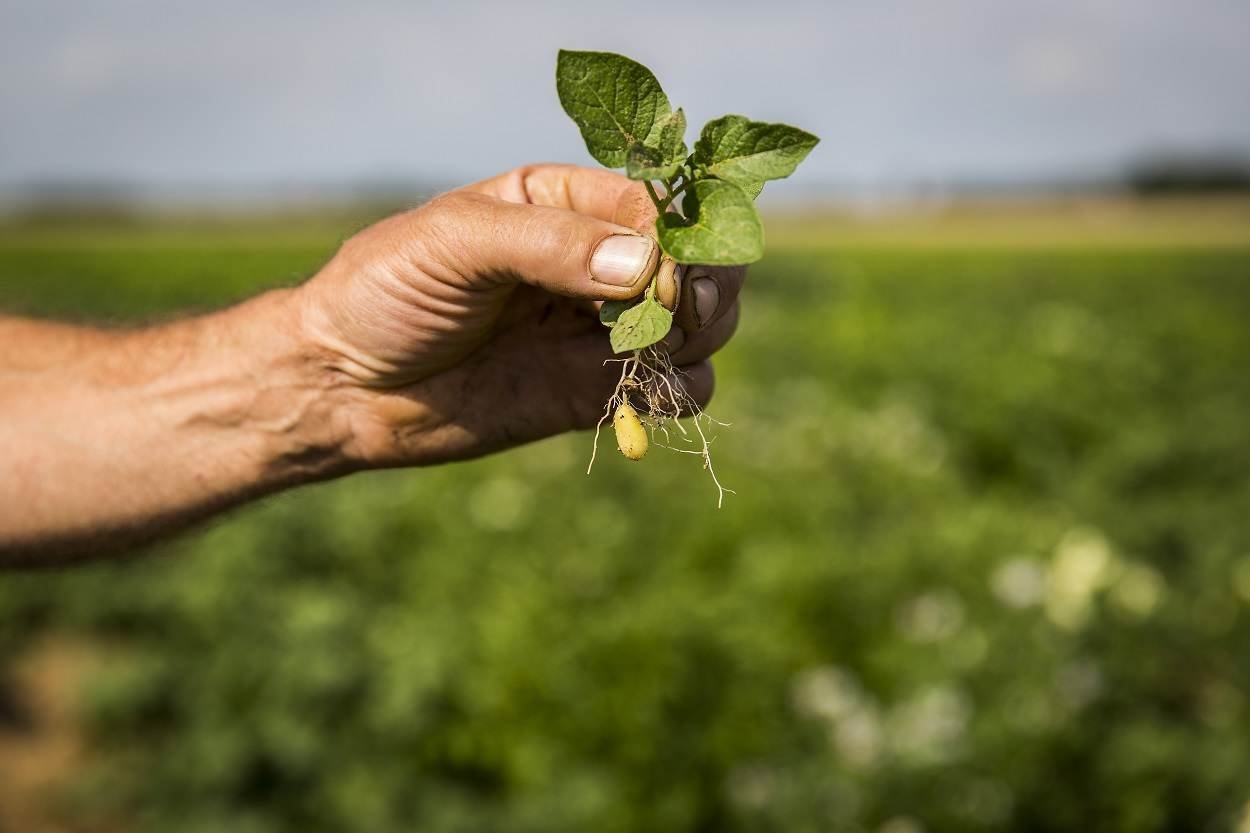
“Precisely because things are going so well in Brainport Eindhoven, it is important to link the power of today to the challenges of tomorrow.” At least, according to Arnold Stokking, Managing Director Industry at TNO and initiator of the future exploration of Brainport Eindhoven. Where are the opportunities for the region when it comes to innovation and new business models in 2038? In this biweekly column, Stokking and those directly involved explain important points from this future exploration.
“Frits sighed deeply, his brain haemorrhage a few months ago had turned his life upside down in one fell swoop. Instead of travelling to work he was now picked up every morning by Karel, his regular ‘robofysio’, to rehabilitate. They usually made a tour of the park to do all kinds of exercises, but today a trip to one of the ‘vegetable lawns’ in the centre of the city was on the programme. Luckily his walking abilities were getting better and better and when he was about to fall Karel caught him in time. Curious to find out what vegetables he was going to pick up in the city, he pointed to the window above the 3D food printer in his kitchen to see what was on the menu that evening. All satisfied, he saw that it was one of his favourites that he hadn’t eaten for some time: pasta with gorgonzola sauce and broccoli. Picking the herbs that were needed for this would still be a challenge, he thought immediately, but apparently, he was ready for it now. Since his cerebral haemorrhage, he really started to appreciate the 3D food printer. He soon noticed that chewing and swallowing food was difficult for him. “Dysphagia”, had explained his ‘docbot’ to him: most of the muscles in his mouth and throat were no longer tightened properly, an annoying side effect of his brain haemorrhage. His 3D food printer automatically ensured that his food had just the right thickness and texture, so chewing was almost no longer a problem. Karel appeared on the screen announcing that he was almost there, time to get ready and go.”
In 2038, food is key to people’s health. Food plays an indispensable preventive role to stay healthy or to recover from a disease, virus or operation. Sensors on and in the body monitor all bodily functions in detail and compare the data in real-time with those of millions of other people to determine what nutrients they need. The slightest abnormality is detected immediately, possible physical effects foreseen and the best remedies to prevent worse are identified. Virtual docbots examine the data and inform the personal food coaches who incorporate all the necessary nutrients into personal recipes for meals someone loves. A simple ‘click’, ‘tick’ or ‘blink’ is enough to get the ingredients delivered to your home and download them on the 3D printer or pick up the same meal on the go.
Databots’ analyse the health data they receive anonymously from people in a region or city. They continuously search for patterns and abnormalities to improve the algorithms that predict regional demand for food and nutrients in the coming weeks and months. Agricultural platforms use the insights to advise high-tech farmers and vertical farms on the variety of crops they can best grow to meet demand. These, in turn, feed back the choices they make so that ‘personal food assistants‘ can prescribe other recipes to prevent shortages or surpluses of agricultural products. Where necessary, these vertical farms grow extra nutrients in existing crops and accelerate or slow down the growing season. Sensors in drones that monitor crops and in the robots that harvest them keep an eye at all times on exactly which nutrients are present.
The food sector is on the eve of a high-tech revolution. By 2038, the world will have more than nine billion people who will also spend more on food. In order to meet the rapidly growing demand, productivity in the agricultural sector must increase and logistics chains must improve considerably to prevent unnecessary waste. Agriculture in 2038 has become high-tech precision work that combines ‘Agriculture of Things‘, data analytics and artificial intelligence. The many vertical farms that are mainly located in and around cities can control the fruit and vegetables they grow under cover with even greater precision. Advanced biometric laser techniques follow the development of crops down to the very core at nanomillimeters without contact. Depending on the demand for products, combined with the smallest changes in lighting and conditions, they can accelerate or slow down the growth process and transform the nutrients into products. They are able to grow tailor-made products for specific customers and purposes.
The food sector needs high tech – in 2038 even more than now.
To map the future of Brainport Eindhoven as broadly as possible, all ideas are more than welcome. If you would like to think along with us, please contact [email protected].
